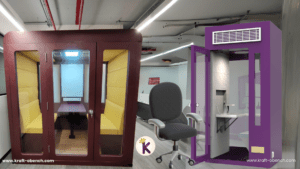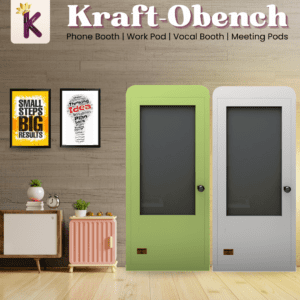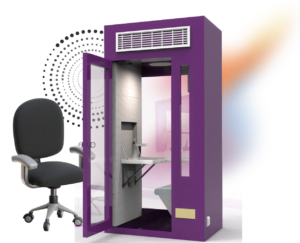The Covid-19 pandemic has sparked the biggest telecommuting “experiment” in history, accelerating the long-term trend toward flexible telecommuting and digitalization. During the peak of the pandemic, the number of people working from home in the US alone rose from 5% to 37%. Now that we get rid of the crisis, the company is trying different long working methods. Recent studies show that 91% of long employees want to continue their hybrid or long work, while 76 % of employees say their employers will allow them to work outwardly. With daily trips effectively canceled during successive Covid-19 lockdowns, many believe WFH will deliver environmental sustainability benefits. Indeed, such dramatic changes in mobility, production, and consumption patterns compared to the 2019 peak temporarily reduced global CO2 emissions by 17% in April 2020. But what appeared to be a promising trend quickly faded: emissions are now almost back to pre-pandemic levels, though workers are not. In fact, Some research also shows that WFH does not have a clear environmental benefit. The net impact of sustainability depends on a variety of employee behaviors, from travel to energy use to digital devices and waste management. It also depends on a number of contextual factors such as housing construction and local infrastructure. For example, this shift to telecommuting creates new challenges for companies competing to publish ESG metrics such as their carbon footprint. How should remote work be viewed in relation to the company’s sustainability goals? What behaviors of WFH employees should companies be aware of? To understand the impact of WFH on sustainability, companies need to consider a range ofemployee behaviors related to the environment. Let’s highlight four areas of behavior that areparticularly important: energy, travel, technology, and waste. When aggregated acrossindividuals, teams, companies, and industries, behavioral changes across these domains canhave a significant impact on the environment. Energy ImprintThe effect of WFH on energy consumption is mixed together, and some studies have found a positive effect, while others show that it has a neutral or even negative effect on energy consumption. After all, this effect may be related to the personal characteristics of employees (eg understanding, attitude, family size, wealth), family infrastructure (such as energy level construction, suppliers), and even the factors of the situation (eg geographical location and seasons). Difference. When companies formulate telecommuting policies, such as subsidizing home energy bills, they must also consider the sustainability impact of residential energy emissions. Shipping imprintWhile WFH is undoubtedly an environmental benefit, commuting has decreased, but evidenceof rebound effects is emerging, including increased absenteeism and short-distance commuting.For example, in a sample of California workers who moved to WFH during the Covid-19pandemic, a decrease in vehicle miles traveled was accompanied by a 26% increase in theaverage number of trips. In addition to changes in commuting, changes in potential emissions from business-related travel in mixed environments such as events and conferences are alsosignificant. technological footprint From a personal footprint perspective, our digital behavior is interconnected. A study has shownthat a “typical business user” – albeit in the pre-Covid-19 period – generates 135 kilograms (298pounds) of carbon dioxide equivalent (CO2 equivalent) per year when sending emails, theequivalent of 200 km. by car. Family car, close to Brussels to London. But today, the technicalneeds of the average business person have changed; less contact in the office can mean moretime spent communicating online. Equally problematic, a key short-term WFH policy adopted byseveral companies is to provide workers with laptops, even at the risk of the device beingduplicated. Waste footprintIn the UK, recycling increased during the first closure; this is consistent with previous researchshowing that employees use more sustainable waste disposal practices at home than at theoffice. WFH can therefore have a net positive effect on the environment of waste managementpractices, bearing in mind that the provision of local services such as waste sorting andrecycling bins is an important enabler. However, there is also a risk that the volume of electronicand electrical waste (e-waste) will increase – approximately 50 million tons worldwide each year,of which only 20% is officially recycled. How can companies make WFH more environmentally sustainable?Remote work creates new challenges for how best to observe and influence behaviors that areimportant for sustainability. An employee’s home is their private domain and organizations mustexercise caution not to overstep. At the same time, many workers would like help from theiremployers to ensure that their WFH system is both convenient and sustainable. Develop asustainability policy that creates additional benefits (such as environmental and financial) andensures that the organization can simultaneously promote employee well-being andperformance in order to achieve its sustainability goals. Organizational leaders concerned with reducing the environmental impact of their employees—and we believe all leaders should—can begin by developing WFH programs and policies with the following three considerations in mind. Embedding a culture of sustainability. To create an environmentally sustainable and climate-friendly culture, organizations mustensure that sustainability considerations are included in every business decision in allindustries, not just corporate social responsibility. This means first considering existing societalnorms and perceptions around remote (and internal) employee travel, technology, waste, andenergy emissions, and then developing ways to reduce these emissions by addressing howpeople interact with each of them. Practice. For example, What initiatives, tools, and techniques are in place to help (or stop) employees’green behavior at home? Is there a meeting policy that defaults to remote (rather than in-person) meetings? How do leaders and managers work with their teams, including remoteworkers, on existing sustainability practices and commitments? Managers can further help builda culture of sustainability by following existing environmental policies. Consider Ingvar Kamprad, founder of IKEA, who is often credited with bringing sustainability to the masses through hispushy business practices like not flying business class. As managers have to give speeches,they also have to allow employees to choose how they implement politics. This will allow you to support employees instead of monitoring and improving, instead of extending the trust and goodwill of the employees. Provide supportive policies.Reviewing existing policies is an important first step, but often not enough. To embed anenvironmentally sustainable culture, organizational








